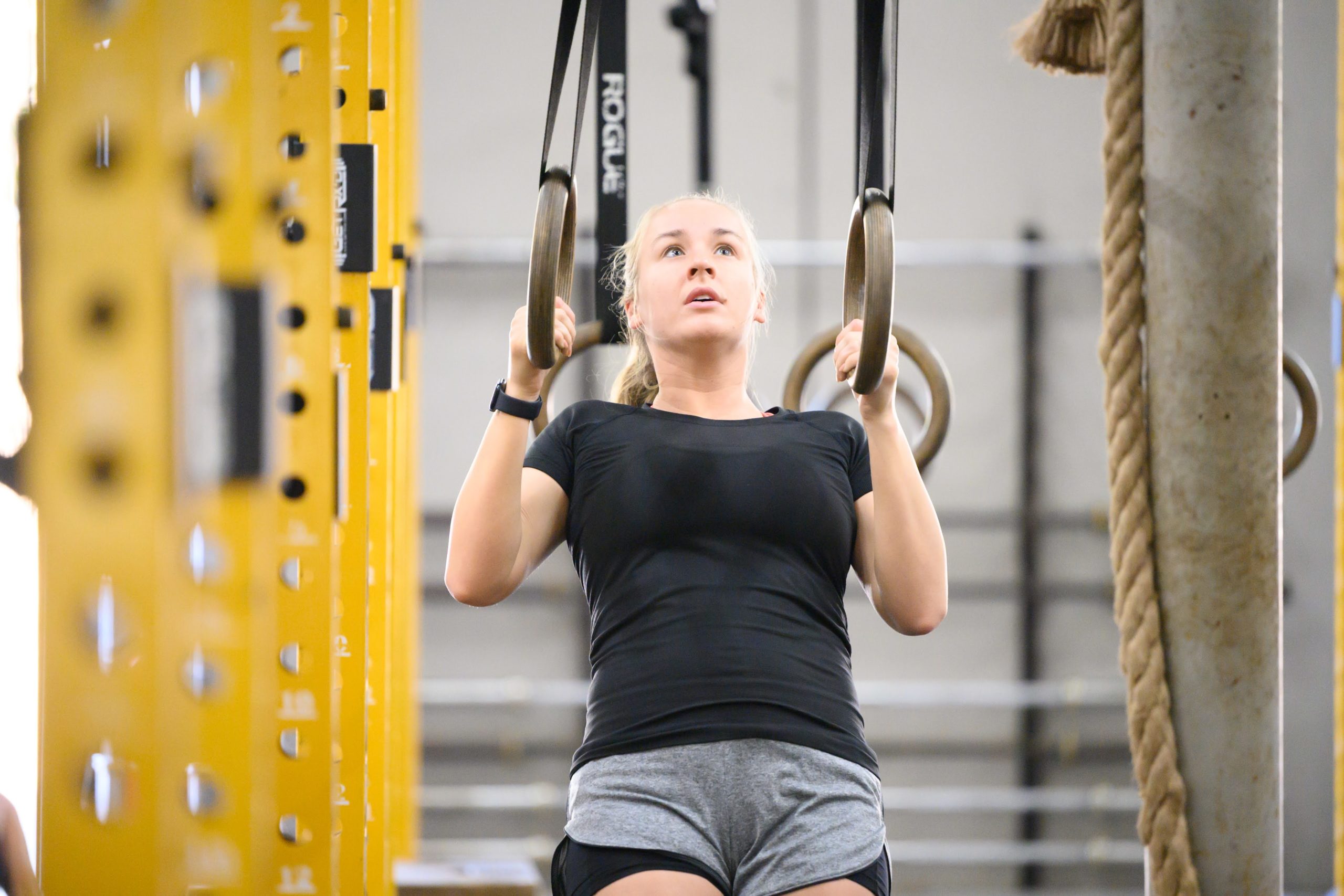We’ve talked a lot about nutrition in the latest blogs. We talked the basics, each individual macronutrient, as well as how to properly track your food intake.
But what happens if you aren’t the kind of person who wants to track your calories? What if it doesn’t click for you?
Well, I’d argue that it *does* work for you… you just haven’t found the right coach to help you implement it the right way (but that’s for an entirely different blog). That’s not what today’s blog is about though.
In this blog, I’m going to give you a few different ways you could potentially lose weight without actually having to track your calories using a food scale, MyFitnessPal, or anything else that I talked about in the last blog post.
Note before we get started – every option you’re about to read is going to help you get into a caloric deficit. The caloric deficit is absolutely necessary if you want to lose weight. If you try one of these options and you are not losing weight after giving it enough time (2-4 weeks), you are not in a calorie deficit.
These options are listed in random order.
Option 1 – Intermittent Fasting
No doubt you’ve heard someone you know talk about fasting, or have seen someone on Instagram spreading misinformation about how fasting can cure cancer or yada yada blah blah blah (ugh, I hate the fitness industry sometimes).
But there IS merit to intermittent fasting, and it can have some huge benefits for you in regards to your weight loss. Not because of anything magic, but because it will inherently put you in a calorie deficit.
Most people follow the 8:16 rule for fasting. As in, they fast for 16 hours, and they have an 8 hour window when they can eat food. For many people, those 8 hours will be from Noon to 8PM. This generally means they’ll eat 2-3 meals inside of that 8 hour window (lunch, a snack, and dinner). Essentially, you’re just skipping breakfast! The thought process is since the meals will be closer together, you will inherently be more full by the time your next meal rolls around and want to intuitively eat less.
This option works really well for some people. If you’ve never tried it, it could be a great option for you! For me, this is a terrible idea. I already have a bad enough habit of eating to excess, and if you were to over-restrict my eating to a small window, I would more than likely eat to excess knowing I wasn’t going to be able to eat after my window closed.
But hey, give it a shot!
Option 2 – Time Windows
A bit like intermittent fasting, yes, but without the large 16 hour window of no eating. This gives you some time frames and rules to help people who tend to mindlessly snack or graze all day.
An example of a time window style of eating:
- 8AM – 9AM: 1st meal
- 1PM – 2PM: 2nd meal
- 7PM – 8PM: 3rd meal
If you tend to identify as a snacker, or a late night muncher, this could definitely work well for you!
Option 3 – No Meals Out (or at least LESS meals out)
Want to save a boatload of calories? Well, stop eating out so much! Whenever we go for fast food options, or out to eat at restaurants, we sacrifice calories for convenience or an “out to eat” experience.
Restaurants will do everything they can to get you to love their dining experience, and that usually means loading up the foods with high calorie butters and oils, and creating massive serving sizes so you appreciate the amount of food you’re getting for the money you’re spending.
Problem with that … we end up eating too much.
Even simply cutting back and the amount of meals out you have will drastically help you reduce your caloric intake. If you usually eat out 7-10 meals a week, try to bring it down to 3-5 and see how it goes.
Personally, Rachel and I only eat out once or twice a week. It’s usually just once for Pizza Friday (stuffed crust, obviously. We’re classy).
Option 4 – BAS METHOD
BAS stands for BIG ASS SALAD. As in, each meal, you need to eat a big ass salad!
It’s incredibly easy to overeat processed carbs, pastas, breads, casseroles, yada yada… but it’s pretty hard to over-eat a big ass salad! The pitfall of a bigass salad though are the fixins. It’s pretty simple to load up extra and unnecessary calories with too much cheese, too much dressing/oil, etc etc.
Here’s my recipe for a bigass salad
- Giant Bowl (I’ll literally use a mixing bowl sometimes)
- Fill it up with mixed greens, spinach, arugula… whatever you like!
- Chopped bell pepper and onion
- 4-8oz of cooked meat (chicken is great if you’re keeping it lean)
- A sprinkle of cotija cheese
- Greek yogurt avocado ranch
Boom. You’ll be nice and full after this and have a nice low calorie meal.
Option 5 – Smaller Plates
It’s all about portion control, right? (Ahem… calorie deficit, but yeah, portion control!). We humans tend to love to see our plates filled. There’s something satisfying about it, and it makes us feel like we aren’t deprived.
So instead of using your large plate with a smaller serving (which would subconsciously make you feel deprived), use smaller plates instead and fill them up. Sure, there’s nothing stopping you from going back for seconds and completely ruining this idea (please don’t do that), but it’s still a useful option!
Option 6 – The Salad Starter
A bit like the BAS Method, but more like a SAS method (small ass salad). Before each meal, eat a salad! This doesn’t have to be a huge one or anything like we listed above, but having the salad fill up your stomach BEFORE you get after the other delicious food will help you keep portions down without feeling deprived.
We will always go for more food if we feel hungry, so use the starter salad to help you feel less hungry before you serve up the main meal.
Option 7 – Stop Drinking Your Calories
If you drink 2 regular cans of soda a day, you’re more than likely drinking upwards of 300-500 calories a day, and those calories are NOT helping fill you up. Sure, they’ll give you quick energy, but unless you’re using these to help fuel some endurance running, they’re more than likely doing more harm than good.
We recommend switching to zero calorie beverages like diet sodas, sparkling waters, flavored water, etc etc. This is an easy fix to help bring down more calories!
Option 8 – Drink Less Alcohol
Ok before you throw your wine on my face like a climactic moment in Days of our Lives, hear me out.
If you drink 2 glasses of wine per night that are 4oz each, that’s an additional 200ish calories per night. But most people are a bit heavy handed on the pour, so those 200ish calories can really be upwards of 300ish, maybe even 400.
Then, the alcohol in your system is going to want you to get a little snacky after dinner, so you go for the ice cream. And then because you have alcohol in your system, you’re NOT going to sleep as well, so the next morning you’ll wake up groggy and foggy and be destined for a day of hunger (fun fact: when you sleep poorly, your hunger hormones ghrelin and leptin will be all out of whack).
If you’re a person drinking 1-2 drinks each night, we’d highly recommend cutting that back to only a few days per week, and if you can, even less than that! Find some awesome non-alcoholic alternatives.
We know from helping thousands of people lose weight that tracking calories is a highly effective way of helping establish lasting behavioral change, but we also know that it might not *click* for everyone. Use these options to help figure out what will be best for you! If you’re in need of extra nutritional help, send our head nutrition coach, Rachel Hibbs, an email at [email protected]
Happy Eating!
-Clark




